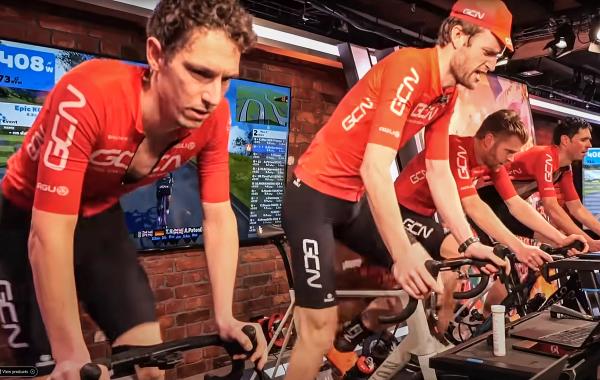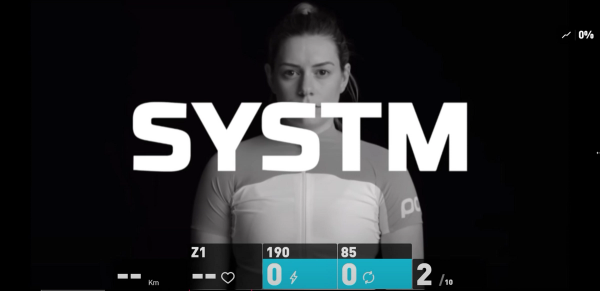Essential turbo training equipment: Everything you need to start training indoors
From turbo trainers to fans, prepare for indoor cycling season with these must-have accessories
Tom Hallam-Gravells
Online Production Editor
You may find that your motivation for outdoor riding wanes during the autumn and winter months. In the face of the colder and often wetter conditions, riding indoors becomes a much more attractive proposition, leading to a mass migration indoors.
Turbo trainers are a great way to keep fit and have lots of fun, all without having to leave your home. If you’re yet to discover the wonderful world of indoor riding, here’s a complete guide to all of the essential equipment you’ll need to get started.
- Read more: Getting started with Zwift indoor training
Reasons to cycle indoors

© GCN
There are many apps that help to make indoor riding an immersive experience
Before we delve into the essential equipment, here are a few reasons why you should definitely start turbo training - if you’ve already caught the bug, skip along to the next section! There are still many riders who think turbo training is dull and boring, a monotonous process of turning the pedals while staring at a wall. When turbo trainers were in their infancy, riding indoors admittedly wasn’t the most engaging activity.
Now things have changed and there are a range of apps available that allow you to emulate basically every type of outdoor riding indoors. You can follow training plans, head out on group rides, explore virtual worlds - many are based on real-life routes like Zwift’s Alpe d’Huez - and even race.
While nothing can ever replace riding outdoors, turbo training provides a really effective and fun alternative, especially when inclement weather kicks in. With that sales pitch out of the way, let’s dive straight into the equipment you’ll need to take advantage of the endless indoor possibilities, starting with the types of turbo trainer - like bikes, there are many to choose from.
What is a turbo trainer?
The most popular choice for most cyclists, turbo trainers essentially turn a regular bike into a static indoor bike. They do this by clamping the rear of the bike in place in one of two ways.
Wheel-on turbo trainers
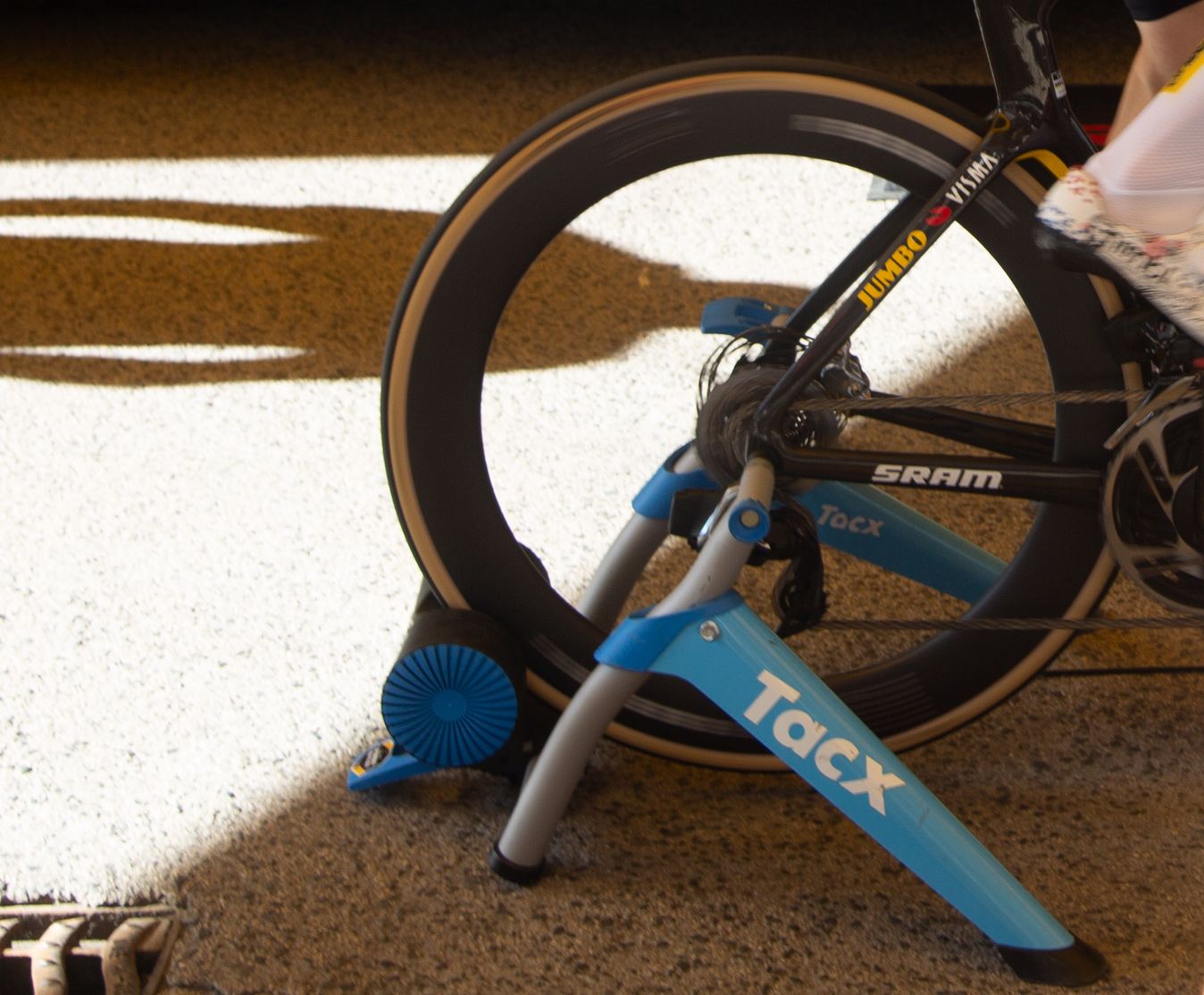
© GCN
Wheel-on turbo trainers are simple to use
As the name suggests, for wheel-on turbo trainers there’s no need to remove the rear wheel. The bike is clamped in place via the rear axle or quick-release while the rear wheel rests on a roller drum. This roller is used to generate resistance.
Generally, it’s best to use a dedicated indoor tyre for a wheel-on trainer as regular road tyres will wear quickly.
Wheel-on trainers used to dominate the market but they’ve been superseded by direct-drive options and now generally represent the entry-level to mid-range area of the turbo trainer market.
Direct-drive turbo trainers

© GCN
Direct-drive turbo trainers usually have more features
This leads us neatly onto direct-drive turbo trainers, which essentially replace the rear wheel of a bike. Once the rear wheel is removed, the trainer fits between the rear dropouts and is secured in place using a thru-axle or quick-release skewer. These also have built-in cassettes that the chain is fitted to, and it’s this cassette that generates the resistance.
As there’s no contact point between the tyre and a roller, direct-drive trainers tend to be much quieter - making them a popular choice for your neighbours too (older wheel-on trainers especially were very noisy). They generally also pack in more features, such as higher resistance levels and better accuracy.
Those additional features come with extra cost and wheel-on trainers account for the more premium side of the market.
What are rollers?
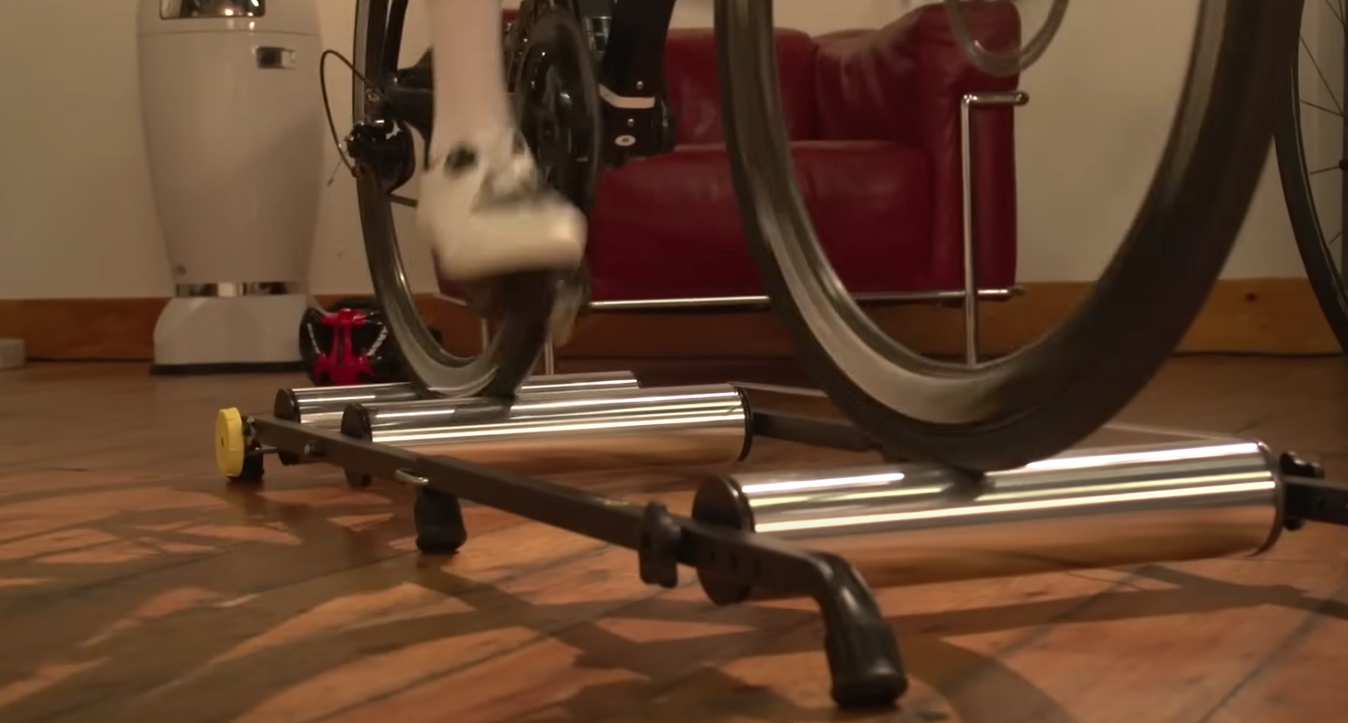
© GCN
Rollers help to improve balance
Before the explosion of the turbo trainer market, rollers were widespread. Now they’re a rare sight in pain caves, but some riders still prefer them, mainly thanks to their simplicity.
Usually formed from three rollers, a bike simply sits on top with the rear wheel turning the rear two rollers, which then turns the front roller via a belt. It sounds complicated but they’re very simple, best thought of as a treadmill for bikes.
While the technology has advanced, rollers are still basic compared to turbo trainers, lacking the same level of features. They do require more skill, though, and are a great way to build balance - for your first roller effort, it’s best to position yourself near a wall for added security while you build up confidence.
What is a static/exercise bike?
The final option is a static bike or exercise bike. We’re not talking about the basic models families had in their spare rooms during the 80s and 90s when there was a static bike fad.
Modern static bikes are very advanced, and packed with technology, and most of the top brands like Wahoo and Tacx offer them. There are also dedicated static bike brands like Wattbike.
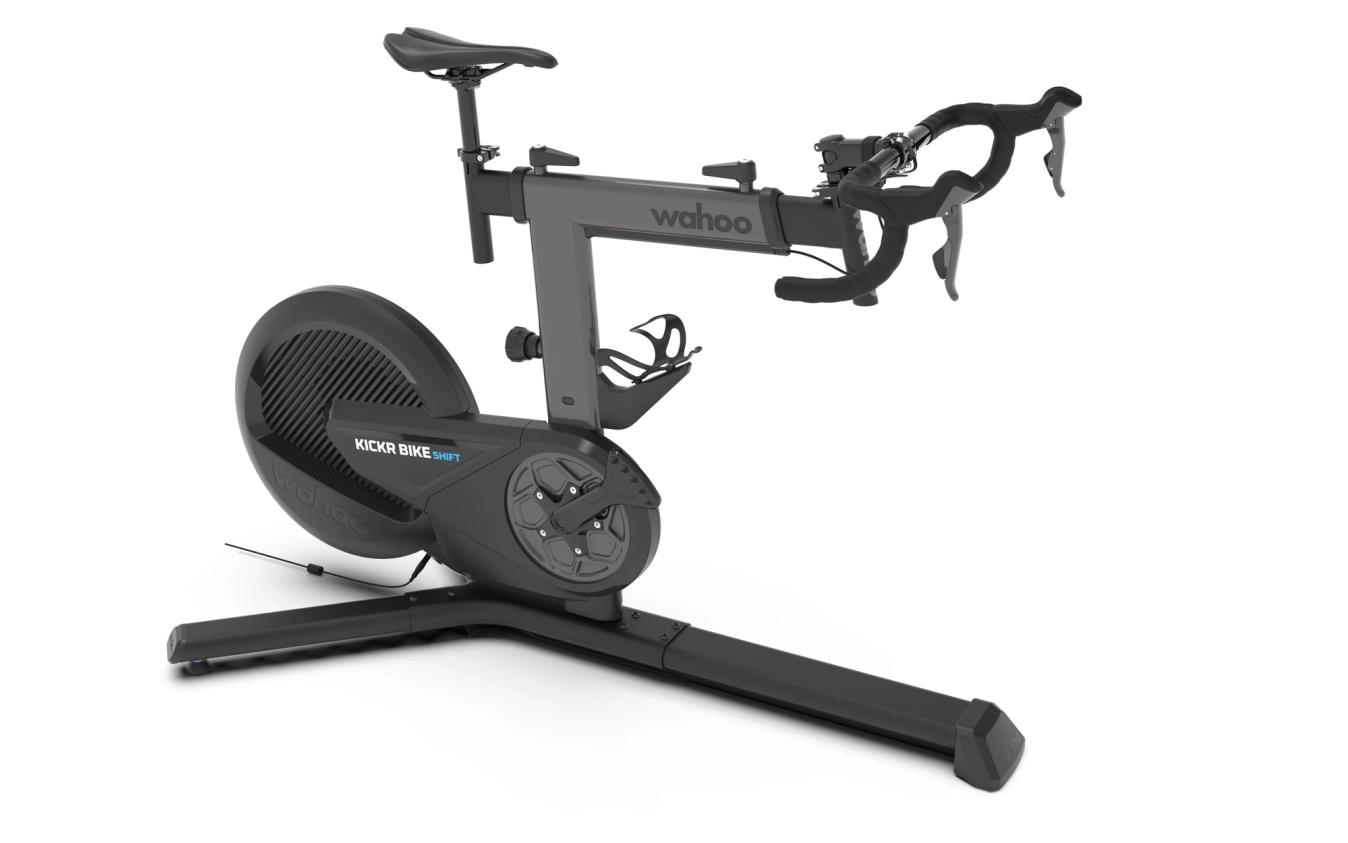
© Wahoo
The Wahoo KICKR Bike Shift
Offering the greatest level of simplicity - it’s just a matter of hop on and ride - plus the most advanced features, static bikes are a great choice for indoor training. That’s why they’re also the most expensive option.
What is a smart trainer?
Many modern turbo trainers are also smart trainers. Smart trainers make the indoor training experience much more interactive. They can connect to indoor training apps such as Zwift or Wahoo SYSTM - usually via Bluetooth or ANT+ - and then control and change the resistance level as you ride. If you’re riding in one of Zwift’s virtual worlds, the trainer will change the resistance level as the terrain changes, increasing it to replicate climbs, or decreasing it for descents.
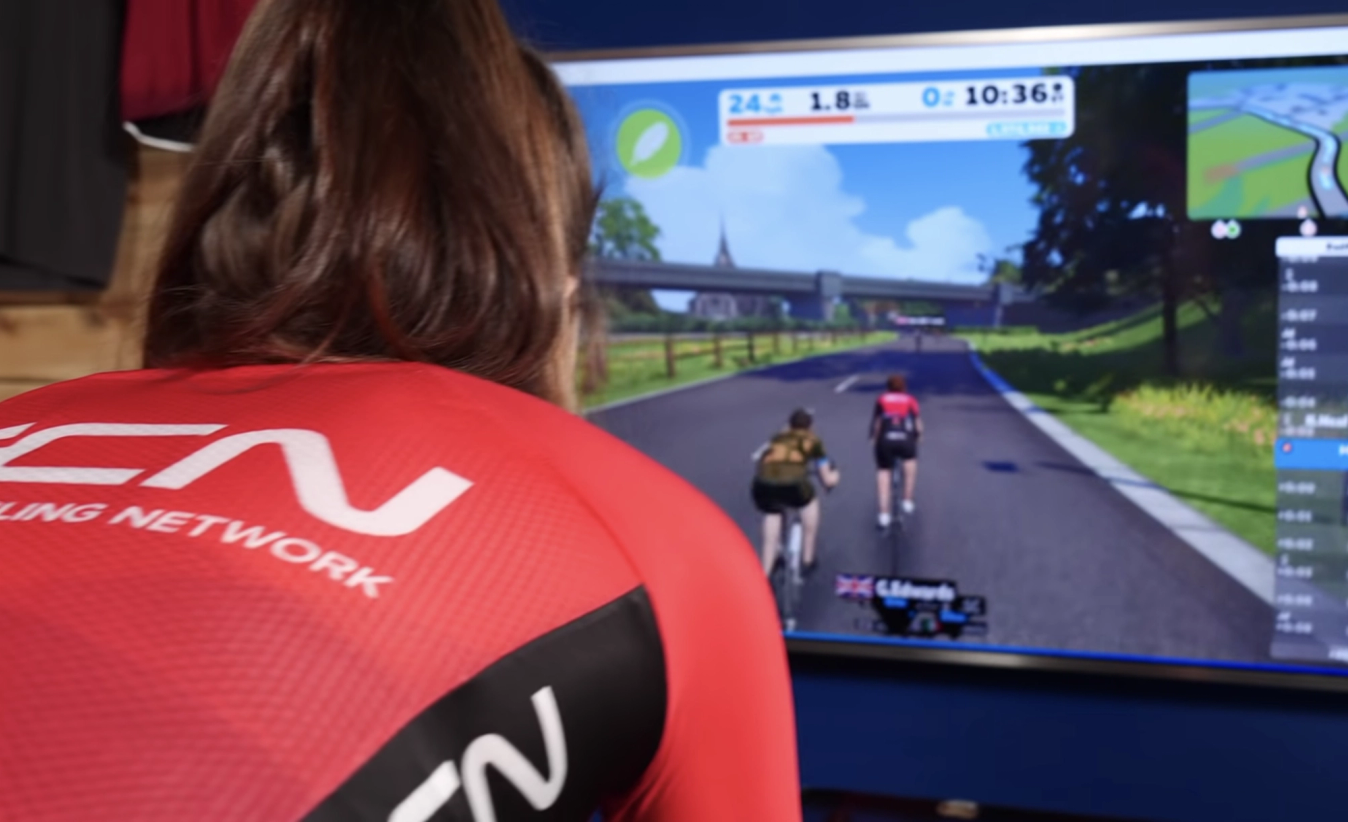
© GCN
Smart trainers create an interactive riding experience
They also have added functionality to aid training, such as ERG mode, which automatically alters the resistance to match the target power during a workout.
To make all of these features possible, smart trainers have in-built power meters, providing accurate power and cadence data.
Regular trainers, sometimes referred to as ‘dumb trainers’ (perhaps unfairly), don’t have these features and the resistance level has to be changed manually. When paired with speed sensors or an on-bike power meter, they can be used with apps such as Zwift, but the experience is less immersive.
Must-have smart and turbo trainer accessories
A turbo trainer is only one part of the indoor training equation. Sure, it’s a very important part, but you’ll also need accessories to maximise the experience.
In no particular order, here’s everything you’ll need.
Fan
Turbo training is sweaty work, like really sweaty, as there’s no airflow to cool you down. The solution? The humble fan. There are dedicated turbo training fans out there, like the Wahoo KICKR, or you can use an old-fashioned one.
- Read more: Do you really need a fan for indoor training? (spoiler alert: yes you do!)
Towel
Escaping the harsh autumn and winter weather means less time spent cleaning and maintaining your bike. Don’t get complacent, though, as you still need to take good care of it, even when training indoors. Turbo training enemy number one is sweat, which can erode bearings and your handlebars. So, use a towel to cover these areas while training and to wipe yourself down.
Sweat guard
As the name suggests, a sweat guard protects your bike from sweat. They usually connect to the seatpost and handlebars, covering the vulnerable headset and handlebar area.
Indoor training mat
All of that sweat will also drip onto the floor, which is why a mat is useful. This will also protect the floor from any other damage and will offer an extra level of noise insulation, muffling vibrations - something your family or neighbours will appreciate.
Front-wheel stand
A turbo trainer will raise the rear of your bike. To counteract this, consider using a front wheel stand. This will level out the bike and provide extra stability. If you want a fully immersive indoor experience, consider the Wahoo KICKR Climb. This raises your front wheel to simulate virtual world gradients.
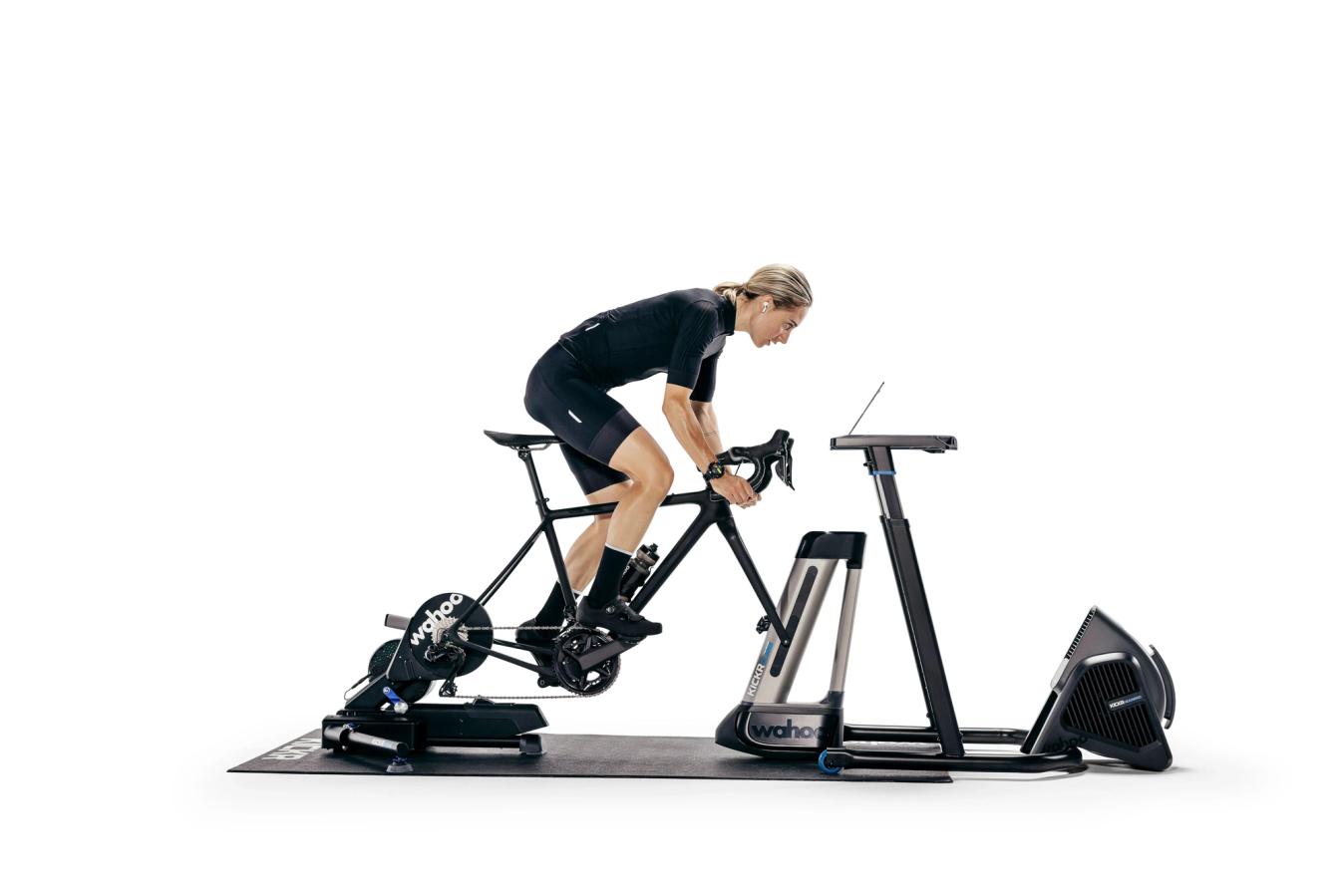
© Wahoo
The Wahoo KICKR Climb simulates gradients by raising the front wheel
Tablet stand
If you’re using an app, you’ll need your phone and/or a tablet nearby. A stand or table can be useful for this, also providing a handy spot to keep any nutrition, extra water bottles or any other accessories you need nearby.
Water bottles
You’ll need to ensure you have water bottles filled to the brim for every ride as - we're going to get bored of saying this - turbo training is seriously sweaty work.
Laptop/tablet/iPad
While it’s possible to link most apps to a phone, it’s much more fun and immersive when the app is on a larger screen. Consider using a laptop or tablet of some kind - most have Bluetooth connectivity so should easily link up to smart turbo trainers.
App subscription
Okay, this isn’t an accessory, but to make the most of your time spent training indoors, sign up to an app. There are free options out there now, so this doesn't necessarily mean a paid subscription. If you need any help picking the best one, check out our complete guide to indoor training apps.
Are you prepared for turbo training season?
Need more indoor training advice or inspiration? GCN's ultimate guide to indoor cycling has you covered with advice and guides on everything from turbo training tech to workouts. Check it out here.









.jpg?w=600&auto=format)
